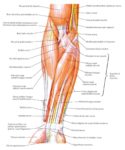Levels of Organization in Living Organisms
Living organisms are complex entities that exhibit a high degree of organization. This organization can be observed at various levels, each with increasing complexity. Here’s an overview of these levels:
1. Atoms and Molecules: At the most basic level, all matter, including living organisms, is composed of atoms. Atoms combine to form molecules, which are the building blocks of everything in the universe.
2. Macromolecules and Organelles: Many biologically important molecules are macromolecules, large molecules typically formed by polymerization. Examples include DNA, which contains the instructions for the structure and functioning of all living organisms. Some cells contain aggregates of macromolecules surrounded by membranes; these are called organelles.
3. Cells: The cell is the basic unit of structure and function of all living things. Cells can be classified as prokaryotic or eukaryotic.
4. Tissues: A tissue is a group of cells of the same kind that work together to perform a specific function.
5. Organs: An organ is a structure composed of one or more types of tissues. The tissues of an organ work together to perform a specific function.
6. Organ Systems: An organ system is a group of organs that work together to perform a certain function. Examples of organ systems in a human include the skeletal, nervous, and reproductive systems.
7. Organisms: An organism is an individual living thing that may be made up of one or more organ systems.
8. Populations: Organisms of the same species that live in the same area make up a population.
9. Communities: All of the populations that live in the same area make up a community.
10. Ecosystems: An ecosystem consists of all the living things (biotic factors) in a given area, together with the nonliving environment (abiotic factors).
11. Biosphere: The biosphere is the global ecological system integrating all living beings and their relationships.
This hierarchical organization from atoms to the biosphere represents the incredible complexity and order of life. Each level provides the foundation for the next, and understanding this hierarchy is fundamental to the study of biology.


